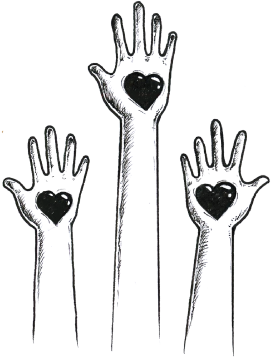January 27, 2015
A greener, wealthier future for farmers with village torrefaction plants
contributor: Rob Goodier

There’s a more efficient way to make charcoal using torrefaction plants. Photo by CIFOR / Flickr
In the near future, farms in developing countries could add coal to the list of goods that they produce. And any kind of farm just about anywhere in the world could be eligible. The trick is to build village-sized torrefaction plants in farming communities. The plants heat waste from the fields to convert it into charcoal, or biocoal. This coal is more energy dense than the raw materials that go into it, and farmers can sell it for cooking and heating. It can even fuel coal-fired power plants.
Torrefaction plants could someday be a common sight in rural villages, if Paul Polak has his way. Polak is a social entrepreneur and founder of the appropriate technology design firms D-Rev, iDE and Windhorse International who has been instrumental in developing low-cost treadle pumps and solar pumps for farm irrigation. Now he would like to help farmers turn their waste into something with value.
A huge need
The market for a low-cost torrefaction plant could hardly be larger. Farming is the world’s biggest business, employing one-third of people who have jobs. And more than two-thirds of the world’s farms are small, at less than one hectare. http://www.globalagriculture.org/report-topics/industrial-agriculture-and-small-scale-farming.html
Farming is also wasteful. There may be 4-5 billion metric tons of waste produced on fields every year. Some of it simply rots and some of it burns when farmers ignite their fields to clear them for planting. Polak and his team estimate that 1 billion tons of that waste is suitable for torrefaction.
Torrefaction plants are huge, expensive beasts that would bankrupt a farming village. But Polak’s vision is to design plants that cost as little as $25,000. He explains in this video of an interview that he gave after the American Society of Mechanical Engineers’s International mechanical engineering Congress and Exposition in Montreal, Canada, in November 2014. His comments on torrefaction begin at minute 2:13.
“India’s having trouble getting good quality coal, so there’s a huge, unmet demand for biomass or a substitute for coal. If we can produce that $25,000 torrefaction plant in a village that will do seven tons a day at a value of about $150 a ton, that is one of your so-called disruptive innovations. Once you have 10,000 of those plants, you have enough volume to start being attractive to electricity producers using coal in India,” Polak says.

This do-it-yourself torrefaction retort can heat its own biomass. Photo courtesy of CharcoalKiln.com
Interesting engineering challenges
The technology offers some interesting challenges for engineers. On his site, Polak points to this small, do-it-yourself torrefaction system built from two 55-gallon oil drums as inspiration for at least a part of the design his team is developing.
This system, once started, ends up heating itself. You place the farm waste, or any kind of biomass, in a chamber and heat it. Finding the best temperature is one of the challenges and it affects the finished product, but we’ll leave that off for the sake of brevity.
As it heats, the biomass releases gases. Losing gases means that the biomass is losing mass, but one of the interesting things about this process is that it loses mass at a much sharper rate than it loses the stored energy available to burn, so that the charcoal that is left at the end is more energy dense than the raw material that went into the chamber.
Another interesting thing about the gases is that they are combustible. In this home-sized torrefaction unit, the gases are channeled from the biomass chamber around to the fire that is heating it, so that once it is started, the biomass supplies the fuel to continue heating itself until it becomes charcoal.
Larger plants might employ a similar technique, and they might also try to make use of waste heat to produce hot water, steam or other products with resale value.
tags : coal, farm, farmers, farming, Paul Polak, torrefaction, torrefaction plant





15-07-2018 10:39:36 AM
SATHEESAN says:
30-06-2018 01:21:37 PM
sAtheesan says:
18-03-2018 06:13:08 AM
Mahesh Chand Goel says: